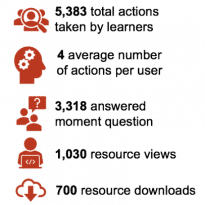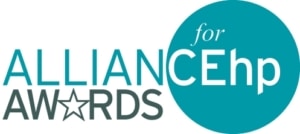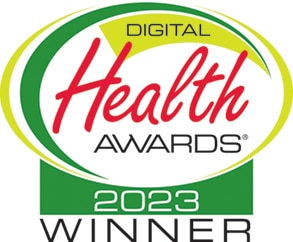You’ve probably experienced microcontent – short video, imagery, or written content – on a daily basis, through Twitter posts, SnapChat videos, or Instagram stories. These ‘snack-sized’ pieces of content are immediately engaging and allow the viewer to consume the content in its entirety quickly without a huge time – or attention – investment. But microcontent is also being used in other applications. A recent article co-authored by Marie Judkins of CME Outfitters and Michelle Tyner and Kenny Cox of ArcheMedX and published in the Alliance for Continuing Education in the Health Professions June newsletter explores microcontent when used in medical education. Read more about how microcontent can facilitate learning for health care providers in the article below.
Medical Education using Microcontent Model
 Can microcontent models, shape the instructional design of medical education? We at CME Outfitters tested that theory with the goal of providing high-impact science within a strategic platform designed to facilitate and assess how clinicians interact and learn.
Can microcontent models, shape the instructional design of medical education? We at CME Outfitters tested that theory with the goal of providing high-impact science within a strategic platform designed to facilitate and assess how clinicians interact and learn.
CME Outfitters assessed trends in media consumption, applying principles from entertainment viewing experiences to medical education with our CMEO BriefCase format. CME Outfitters and ArcheMedX launched a series of activities on major depressive disorder designed to improve screening and integration of measurement-based tools. Learner feedback has confirmed that preferences are trending toward short-form content that affords minimal time investment while still maintaining high-value education
“Technically superior format, including pop-ups and links. Love the short format,” commented a learner.
The Results of the Study
The ArcheMedX learning platform magnified the interaction within the activities with the goal of driving clinicians to slow down, reflect and dive deeper into the evidence. Although the activities were designed in 15-minute segments, the learners’ actions increased the amount of time spent on average by five minutes. With nearly 5,400 total actions taken, users averaged at least four interactions with the content. The reinforcing resources have more than 1,000 views and 700 downloads, indicating learners need tools for use in clinical practice. The most downloaded tool was the PHQ-9.
The series has outperformed our expectations with an overall completion rate to date of 82%. In preliminary data analysis, 78% of learners indicated that the activity improved their knowledge, and 90% said that they would change the way they practice based on the series.
One learner commented, “This presentation was clear, helpful, and to the point…that taught me new ways of looking at measuring patient outcomes.”
Learn more and participate in these activities here.
The Authors
Marie Judkins, CME Outfitters
Michelle Tyner, ArcheMedX
Kenny Cox, ArcheMedX








